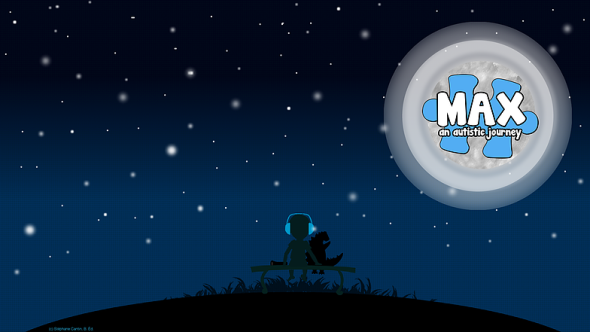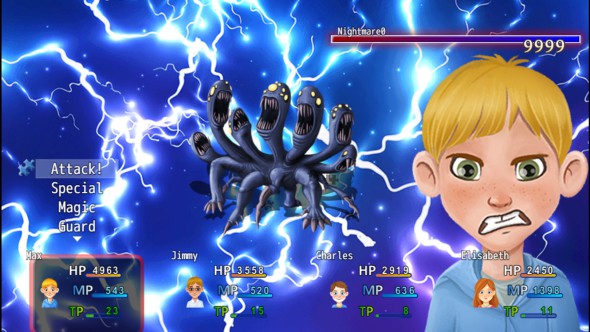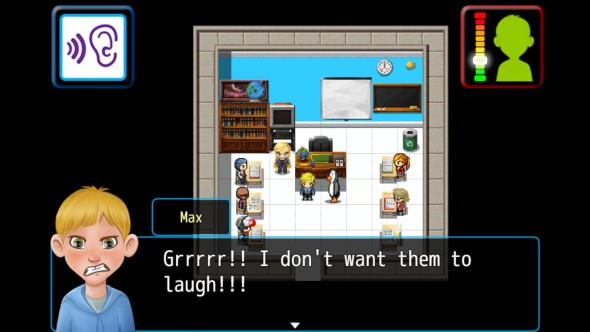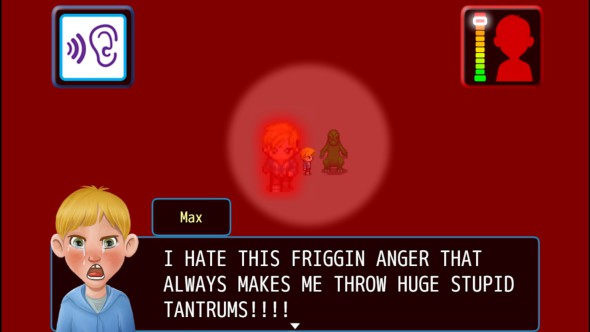
Max: An Autistic Journey – Review
Autism Spectrum Disorder is a disorder that is quite common, yet often not so well understood. The symptoms are so diverse that it is difficult sometimes to know what exactly it is, and how to live with someone who suffers from it. Stéphane Cantin wants to help us understand with this game he developed. The lead character Max is based on his own son, thus he can definitely speak from experience. It’s an original starting point for a game, and we were very curious to see how he approached this all.
Story
Max is a ten year old boy who suffers from Autism Spectrum Disorder. Because of his ASD, he can have severe anxiety attacks or get really mad about nothing at all when there isn’t any structure in his day. That’s why his father made a schedule for him to follow every day. The game is entirely based on the developer’s son, who suffers from ASD as well, so it is designed to get a closer look at the condition, but also at what it’s like to live with someone who has it.
In the game, you are Max himself, and you’ll have to guide him through one entire day. You’ll have to make sure that he does every task, with the help of the pictos his dad left everywhere to remind him. While doing these tasks, you’ll be confronted with all kinds of problems and difficulties that Max has to live with and you’ll see how he reacts to that.
Truth be told, the story is nicely built up and is an interesting alteration between more airy, fun sequences and more serious ones where you get information about ASD, and see what happens when Max has a breakdown. It’s educational and fun at the same time.
Graphics
Graphically the game is quite diverse. On one side there is the story content itself, where the characters appear big on screen while you read their lines (as there is no voice acting in this game). The characters look very likeable here, and the emotions they feel during the story are stressed by their changing facial expressions. While walking around at home or in class, the style is more pixilated, yet the characters are still quite recognizable. While the style during conversations is rather consistent, the actual gameplay portions are rather diverse and some are very reminiscent of ald school RPG games, where you’ll have to oplay from a top-down perspective.
Sound
During the whole game, music is quite an important factor. While you’re plowing through the story content, you’ll be accompanied by an easygoing tune, but the minute you start fighting monsters, the music is amped up to get you in the mood for battle. Finishing a battle, finding a picto, unlocking a skill etc. all have their own jingle, thus everything sounds very recognizable. What’s especially nice about the music is that, definitely in the story part, it sets the atmosphere so beautifully that you can really get a good idea of what Max must be feeling at that moment.
Gameplay
Max: An Autistic Journey is a turn-based RPG where you’ll have to guide Max through his day, both at home and at school. You’ll have to make sure he gets dressed, brushes his teeth, prepares for a presentation at school and so on. All of this is not as simple as it may sound though, as in Max’ imagination there are monsters lurking around every corner: in his sock drawer, in the corridor etc., which you’ll have to fight.
You’ll be fighting monsters using the skills you have achieved during your playthrough. There are quite a lot of monsters to fight in the course of the game, and the further you progress, the more skills you’ll have to beat them, yet the monsters themselves also get more plentiful and strong. Sometimes though, you can team up with other people, such as Max’ brothers or sister, to be able to do more damage. Nonetheless, these fights become a bit tiresome after you’ve done a few, even though you can choose many different actions, potions, spells etc. Also, when fighting more monsters at once, you can choose which one to attack, but often the game just chooses a different one than the one you selected, making it difficult to use any tactics.
After combat, you can go up a level, depending on how well you did, which means that you get stronger in battle. You’ll also earn a few tricks which you’ll be able to use during future battles. Also by finishing your tasks, you might earn some extra powers which will come in very handy once the monsters start to get tougher to tackle. Nonetheless, you’ll usually reach for the same items every time again, as not everything is as efficient.
Next to the fighting there are also some other mini games. You’ll have to take Max to school and back home, for example, which results in a Pac-Man kind of game where you’ll be collecting fruits and try to find the right way home in time. Preparing for your presentation about penguins means you’ll have to talk to penguins in a mini game, in music class you’ll have to play an instrument and so on. There is quite some variation in the mini games, even though many of them involve fighting monsters, with mechanics that don’t always work as you would like them to.
During the game, you learn how Max’ dad deals with his ASD, but also how Max himself deals with it. Often when things get too much for him, you’ll have to help him breathe, to make sure he doesn’t burst out in anger. It’s something simple, yet it makes the story segments interactive as well, next to the actual mini games. Later in the game, you’ll also be able to use this as a skill to stay calm in difficult situations.
Conclusion
Max: An Autistic Journey is a game that is both fun and educational. You’ll learn a lot about ASD, without it getting too boring as you also get to see the monsters and dinosaurs that roam Max’ world. Fighting monsters does become a bit tiresome after a while, also due to the mechanics, but there are enough other mini games you can play. If you’re looking to know more about ASD, and learn in a fun manner, than you will definitely like this game.










No Comments